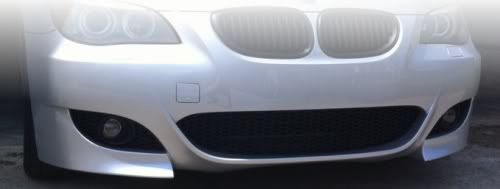I've been collecting the supplies I'd need to do a "big 3" upgrade on my Cavy ever since I put some real stereo equipment in. I even waited until I installed a volt gauge so that I could give a meaningful report on the improvement of the voltage stability. Here you go:
Cables are 4 gauge. I used a slightly modified cable route from the tutorial to better accommodate my 2.2 OHV . All cables are run in from of the engine. Ground cables run from battery to a chassis bolt under the big plastic cover, then immediately down to the stock ground on the transmission. Positive runs from the alternator, also up front through a 150A ANL fuse and back to the battery.

With the engine idling, I did a couple of benchmarks with my stereo at about half volume, playing Red Hot Chili Peppers "Porcelain" for it's long rolling bass hits. I captured video of the Voltmeter during this time.
Videos (6 and 5 megs respectively - sorry):
BEFORE BIG THREE
AFTER BIG THREE
Observations: The starting voltage was quite a bit higher, as was the overall voltage. (I guess about half a volt higher on average). Despite this, the "drops" seemed only slightly less severe, if not nearly the same. I'll be interested to see if my "float" voltage stays higher from now on, or if the regulator is just trying to figure out what's going on and will eventually adjust. The similar voltage drops suggests that I am simply exceeding the limits of the alternator, which I could consider upgrading. Perhaps a Cap would help in the meantime.
Comments welcome, and I hope this information is of use to someone.

Edited 1 time(s). Last edited Sunday, November 11, 2007 6:11 PM

Shop Manuals, Brochures:
www.kenmcgeeautobooks.com
i just finished mine and im running 4 air compessors and my voltage used to drop to like 11 when they were all running...now it only dips to 13 for a split second when they kick on and it stays right at 14! what a difference!!!! DO THIS MOD FOLKS!

For those who don't feel like downloading those videos, here are some handy photoshop overlays as visual aids that show the range of movement. I'll add as well, after looking at the videos again the "After" test only really had one big spike (as shown in the picture). The rest were much smaller than before.



Shop Manuals, Brochures:
www.kenmcgeeautobooks.com
Wow! Big difference eh?
I Might Do the Big 3 in the spring. I have plans to make a fiberglass enclosure in the spare tire well, and if i do, Im going to run one sub (Elemental Designs 13Ov.2 @ 700w RMS) with a lot more power than the 400w rms i feed my Kenwoods.

is it possible to do a dual alternator set up on our cars?

Eternal wrote:is it possible to do a dual alternator set up on our cars?
I have no doubt its possible, but the availability of good upgrade alternators makes that the path better-traveled.

Shop Manuals, Brochures:
www.kenmcgeeautobooks.com
sndsgood wrote:only thing im not real fond of is the power wire running across the front of the car. i prefer it back and out of the way near the motor so less chance of it being pinched or cut in an accident.
I suppose that's a valid point. The main reason I chose the front route was directness, and ease of mounting for that big-ass ANL fuse. I honestly wasn't sure where to put that thing otherwise. I could reroute at a later date if I get some extra cable again, or some better mounting ideas.
As it is, the most annoying thing is that the cables obstruct the plastic clip that holds the hood prop-rod.


Shop Manuals, Brochures:
www.kenmcgeeautobooks.com
Why does the gauge get brighter when the bass hits?

Weebel wrote:Why does the gauge get brighter when the bass hits?
It has a microphone and a sound-sensitive backlight. It's level-adjustable, and can also be disabled if desired. It works pretty well actually -- though the light never really turned off fully while the music was blaring.

Shop Manuals, Brochures:
www.kenmcgeeautobooks.com







